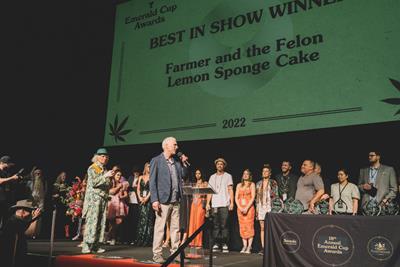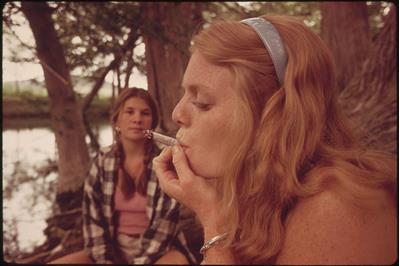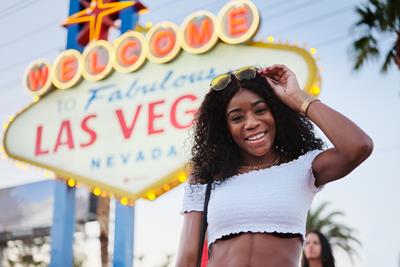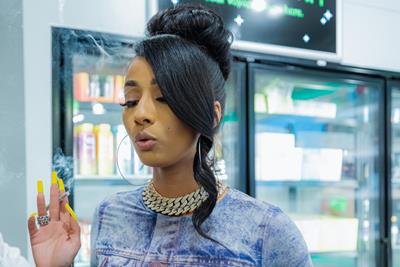
Friday November 1, 2019
By Andrew Ward
 420 Culture
420 Culture
An April 2018 survey of 800 cannabis consumers revealed that roughly 75% of those polled believe that cannabis consumption is not accurately portrayed on television shows. The survey, conducted by Miner & Co. Studio, spoke to respondents in legalized cannabis states. 77% of respondents earned above $75,000 per year with much of them identifying as professionals who enjoyed life. While TV has its cannabis misrepresentation shortcomings, it by no means is where the issue stops. From movies to branding to podcasts, cannabis users are still seen as the lazy stoners that are a drain on society rather than the lifeblood it actually is. Yet, with media lagging disgustingly behind on fairly portraying people of color, the differently-abled and other marginalized communities, what can we expect for cannabis – and does anyone even care?
Stoners in Cinema: A Brief Overview
From Spicoli in Fast Times at Ridgemont High to Cheech and Chong right up to Thurgood and the gang in Half Baked, there is no shortage of options for citing our favorite stoner classic characters and films. That said, as time has gone on, that image has slipped further and further away from reality – if it ever was all that accurate to begin with. That said, their images combined with propaganda films continued to create lasting negative associations to cannabis use that are only now regressing.

As much as we laugh about it now, movies like Reefer Madness created a lasting, damaging impression for cannabis. What was once seen as medicine and a way to relieve some stress became a cautionary tale that starts out fun with music and casual sex amongst friends, and quickly devolves into murder, death by too much piano playing and the unaddressed but painfully obvious risks associated with only having white friends. Shockingly enough, something that dumb made an impact. And as much as we love our characters like Harold, Kumar and countless others, they can sometimes promote negative connotations among less-informed viewers.
Stoner Cinema in Recent Years
In recent years, positive cannabis representation has popped up in small doses on the large screen. Films like Blade Runner and Inherent Vice have shown how a person uses cannabis and continues to work through their daily lives. Though, in Blade Runner’s case, the future is pretty bleak regardless of cannabis. While other movies have done the same, only a handful of examples have existed until recently. In most cases, these films have flown under the radar and not received the budget or buzz as the aforementioned had to work with.
Today, however, that is changing in a variety of ways. A growing number of avenues have brought the varying uses and lifestyles of cannabis to the big screen. The CannaBus Culture Film Festival travels across the United States and shares positive examples of cannabis culture and community – showcasing films and comedy related to cannabis in some degree or another. Meanwhile, Ryan Reynolds created some buzz back in July of 2018 with the announcement of his involvement in the cannabis meets Home Alone film Stoned Alone.
It will take time to see how films like Stoned Alone actually portray cannabis and whether or not they’ll take an objective approach. In the meantime, documentaries continue to serve as the most accurate representation of the cannabis industry and its consumers. Recent works including The Culture High (trailer above) and Mary Janes: The Women of Weed break down the sector from perspectives we’d wish fictional cinema would provide.
What Happens Next in Cinema?
Hollywood is finally starting to make efforts to be more accurate and inclusive with their works. The recent success of films like Black Panther and Crazy Rich Asians have shown that films with diverse casts of color are not only successful at the box office, they please crowds with accurate depictions of their lives. While we’d like to imagine that Hollywood is making these efforts for altruistic reasons, the bottom dollar is likely pushing the narrative for most at this time.
With cultural inclusion just now entering the film fray, what can we expect for cannabis and breaking down marijuana stereotypes? As the Miner survey revealed, cannabis consumers with dollars to spend don’t feel represented on the small screen. That stated, it is likely to assume that they feel the same towards films. As shows like the now-canceled Disjointed taught us, people want real cannabis representation.
People want more characters that lean towards reality like the veteran using cannabis to treat their PTSD or the office worker who microdoses to get through their day.
In short, they want to see people they can relate to. With dollars speaking, we should expect to see more accurate, updated representation in the years ahead. Though, with all inclusion in film, this is just the infancy of the movement. What matures out of this effort is still far from uncertain. While the trend appears favorable, cannabis may fall by the wayside as it does not carry as much cultural significance as a person’s race, religion and heritage. However, by including positive portrayals in works that don’t make cannabis the central focus, but rather just part of a character’s makeup, we are starting to see productive cannabis users and fewer stoners, save for comic relief roles.
As Hollywood finally opens its doors to marginalized and underrepresented groups of people, their stories will come to the big screen more. With hope, cannabis will play some part in these stories, as well as the pictures the industry has greenlit for years. While there will always be room for fun stoner characters, here is hoping that our diverse community of consumers comes to the cinema sooner than later. The caricatures have had the spotlight for far too long.
What are your thoughts on the current portrayal of cannabis in mainstream media? Share your thoughts in the comments below!
Photo Credit: St. Gil, Marc (license)







